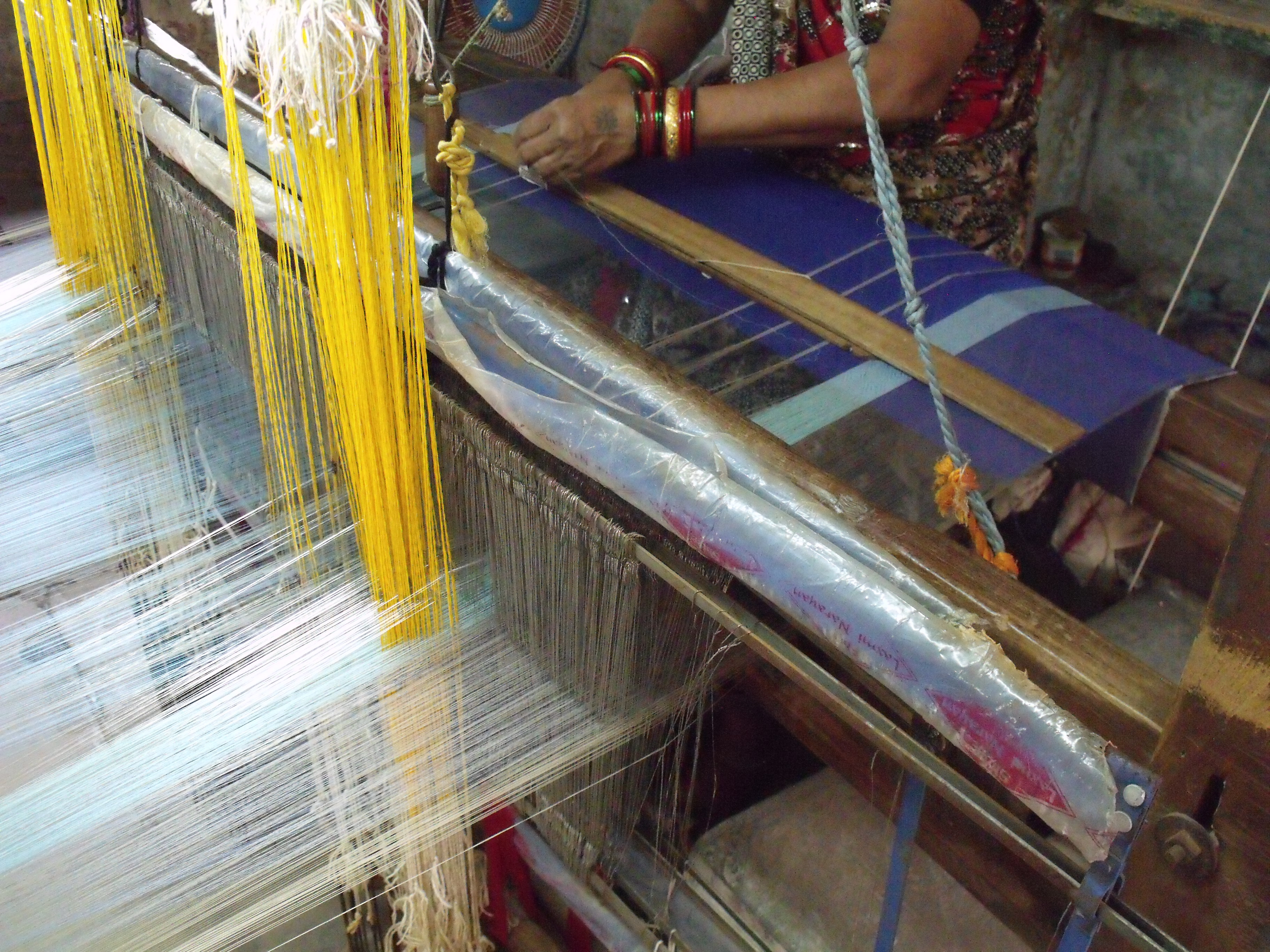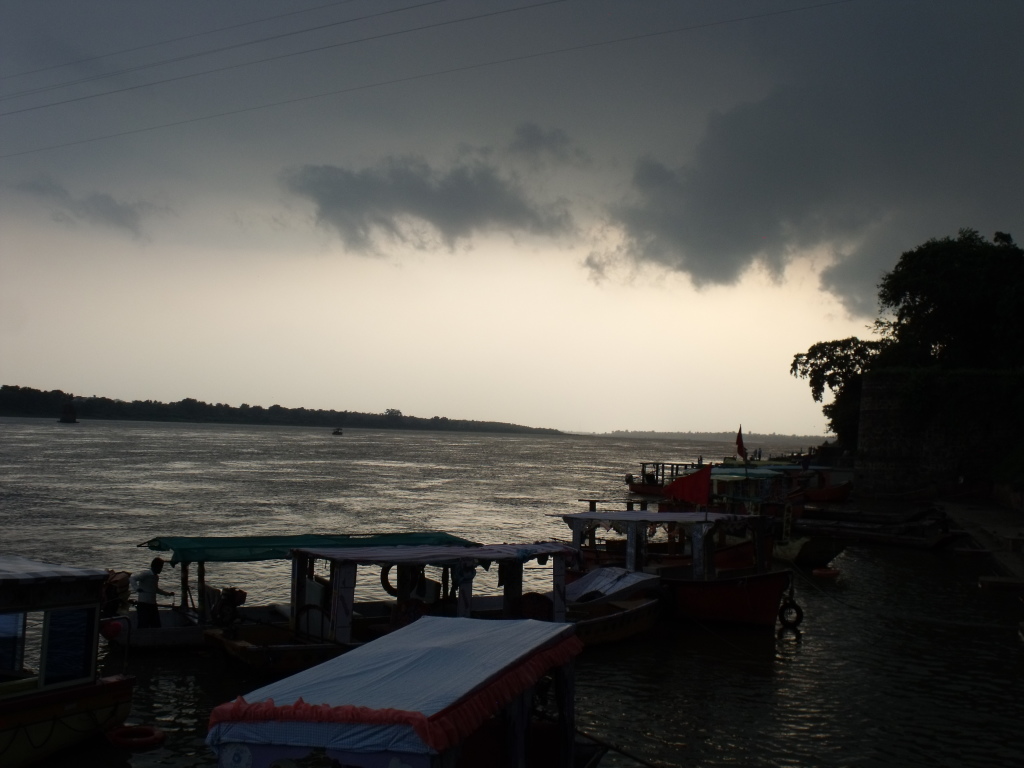The journey to Maheshwar was long and exhausting. A long bumpy bus journey to Indore, a three hour wait for a bus then a three hour bus journey to Maheshwar. But it didn’t take long to realise whey I’d made all that effort as I walked up the streets and heard an orchestra of weaving looms!
My guesthouse was the cheap and comfortable Hansa Heritage Hotel, situated at the bottom of the Ahilya fort which dominates the town. The room was surprisingly large with a traditional warm and earthy decor including Bagh block-printed bed covers (Bagh is a town not far away from Maheshwar which is renowned for its natural-dye and block printed fabrics) and carved wooden chests.
I headed straight for the other side of town where Women Weave is situated, nestled into one of the many small streets that make up the warren of the town. I first discovered the organisation when stumbling upon their stall at Selvedge Fair in 2012 which I wrote briefly about in a previous post. I had emailed Sally Holkar, the founder and CEO of the charitable trust a few weeks before to try and arrange to meet her, but unfortunately she was in America. I was therefore introduced to Hermendra, chief operating officer who kindly spared some of his time to answer my questions about the organisation and the story of weaving in Maheshwar.
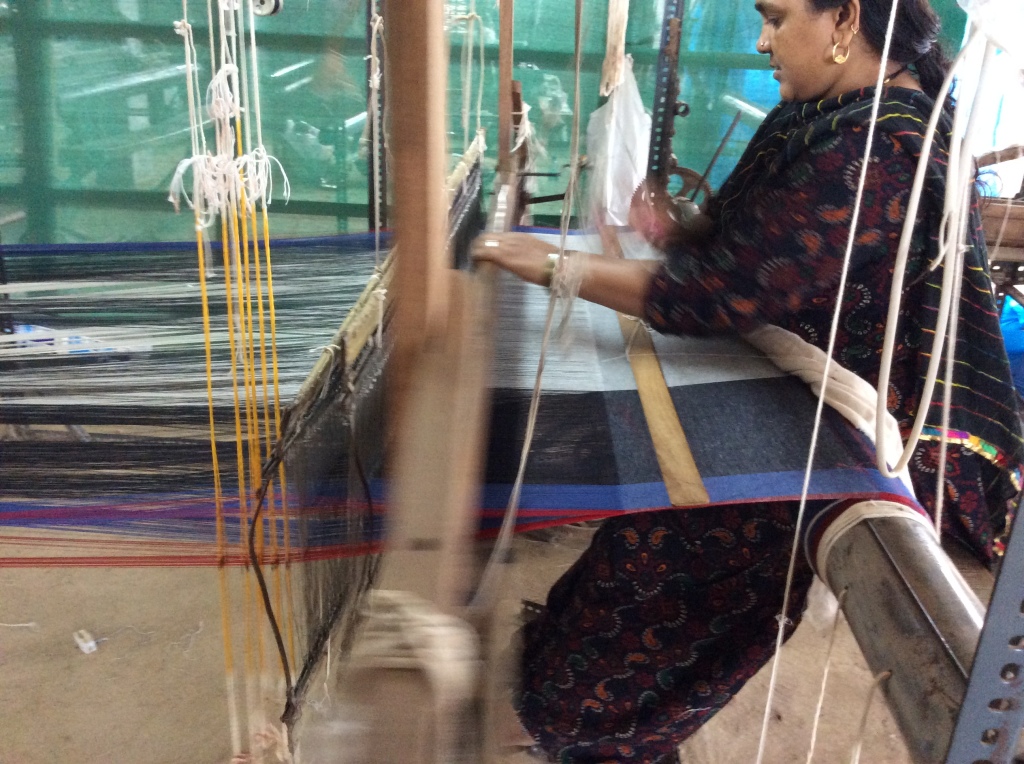
In the 1960s, Sally Holkar married Richard Holkar, a member of the royal Holkar family who have a history of patronising the weaving of the town. Maharani Ahiya Bhai Holkar who ruled the area from 1767 until her death in 1795 is still held in strong admiration today for her peaceful and prosperous rule which included bringing weavers from other parts of India to Maheshwar to build a successful weaving economy. After a dramatic decline in weaving from the 19th century onwards due to powerloom and imported imitations flooding the hand weavers markets, the second half of the 20th century saw efforts to revive India’s stuggling handloom industry which still employed millions of people all over India. Among the revivalists was Sally Holkar. She first co-founded the Rehwa Society with her then husband, in 1978 to revive traditional weaving and also provide sustainable employment mainly to women of Maheshwar and surrounding villages.
I later visited Rehwa and found it to be a thriving organisation with two large workshops in the beautiful setting of the Ahilya Fort (built by the queen during her rule) on the banks of the Namada river. The society also run a successful primary school which they are continuously expanding and developing.
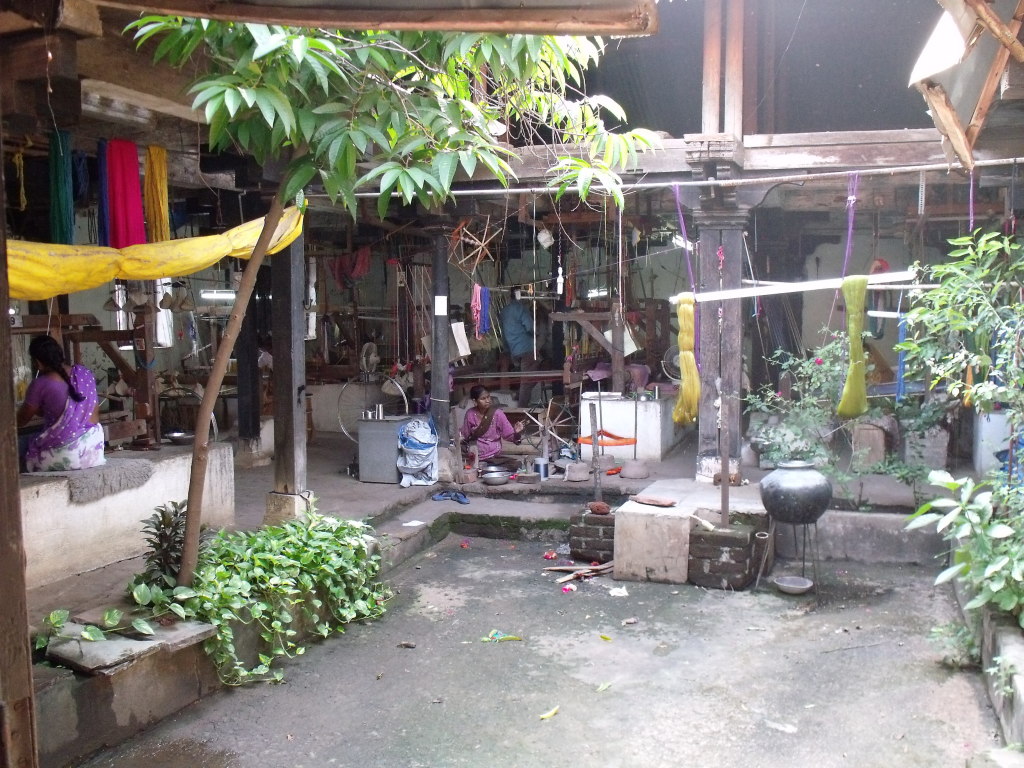
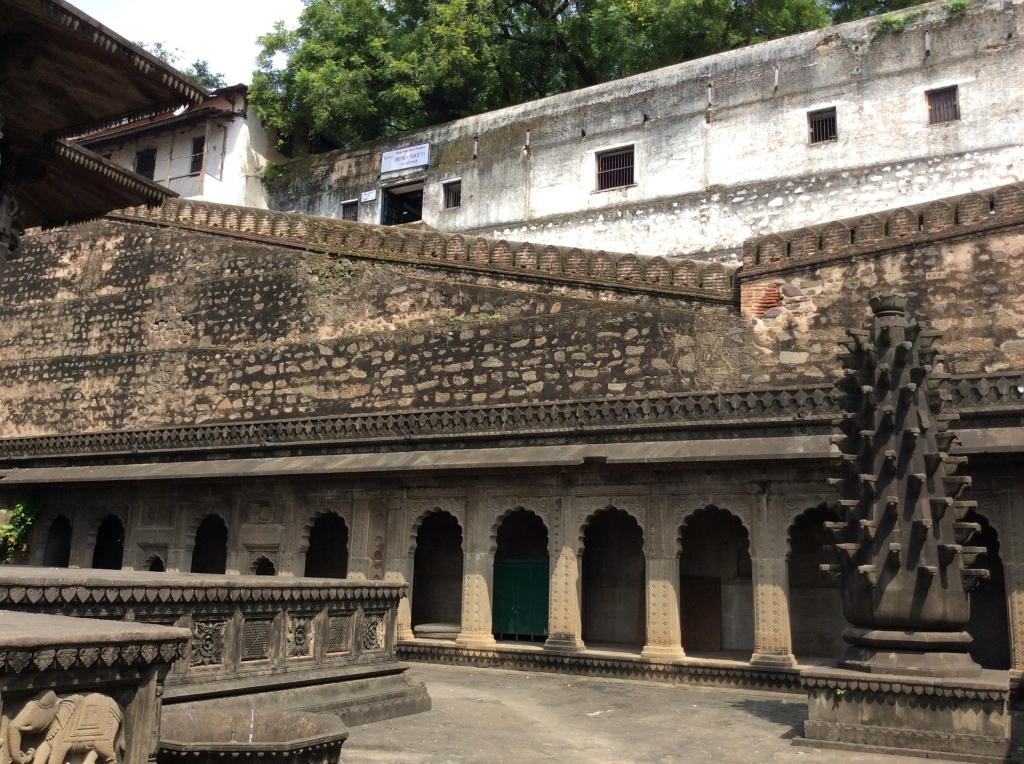
Hermendra informed me that out of a population of 30,000 people about 3,000 people in Maheshwar now work in handloom weaving – either as weavers, spinners or doing preparatory work, which has increased from only about 200 since the 1970s. I realised this as I walked from Women Weave to Rehwa. I found that the whole town was filled with the sound of clacking looms and in almost every other house I passed I caught a glimpse of a figure at a loom or one sat doing preparatory work such as winding a bobin. Along the main bazaar are many showrooms and shops displaying shining silk and cotton saris, dupattas and dress fabrics. What makes the fabric shine is typically cotton in the warp and silk in the weft, along with the zari (gold thread, although now copper is mostly used) borders. Stopping by at these showrooms would be city dwellers buying in bulk for their shop, or buying saris for a special occasion or wedding dowry.
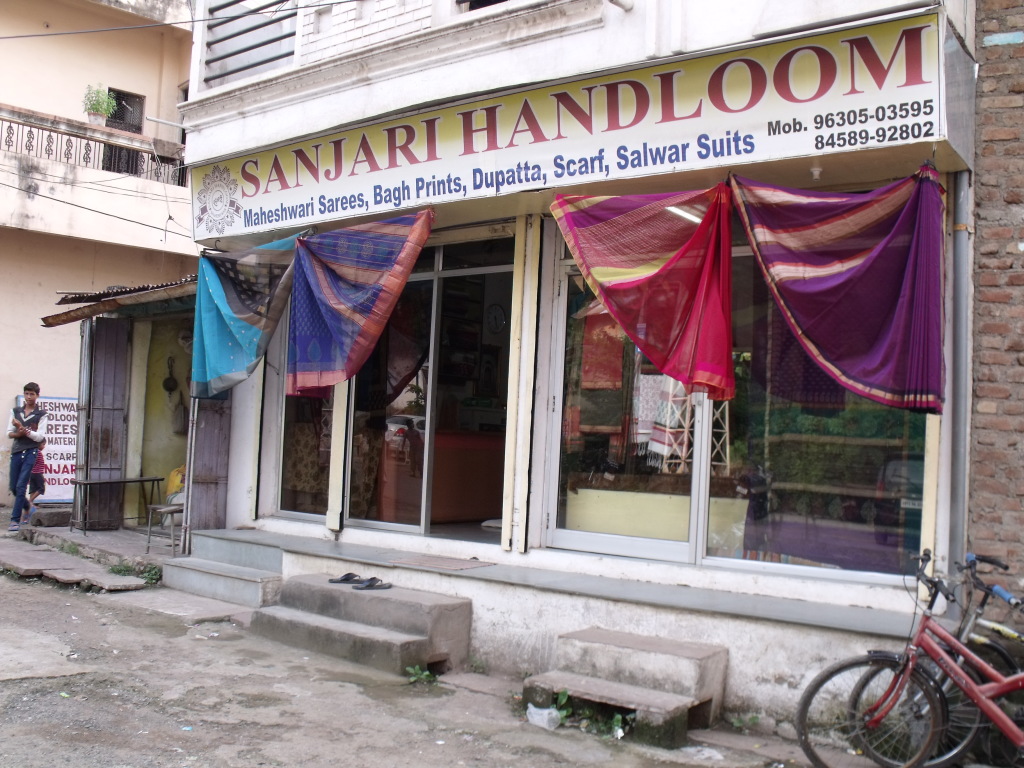
Many weavers built confidence and contacts through working with Rehwa and left to set up their own workshop. The hotel I was staying in even had a showroom and later Rohit the manager took me to see his brother’s workshop which had five looms. Generally the Master Weavers are men. Indeed in most of India, with the exception of parts of the far North of India, and North East India, it is men who weave. It has been considered too physically difficult for women who are generally given the preparatory tasks. For an article in the Hindu, Holkar explains why she wanted to offer weaving as employment to women. Hermendra mentioned that many women previously worked in agricultural labour (work that surely is tougher physically for women than weaving!), but the pay being poor and the hours few, weaving was a favourable alternative. Training women, many who are not from traditional weaving families, in weaving has therefore been an important part of both Rehwa and Women Weave. Now new employees are often a friend or relative of an existing employee or have just heard about the benefits of the organisation from word of mouth.
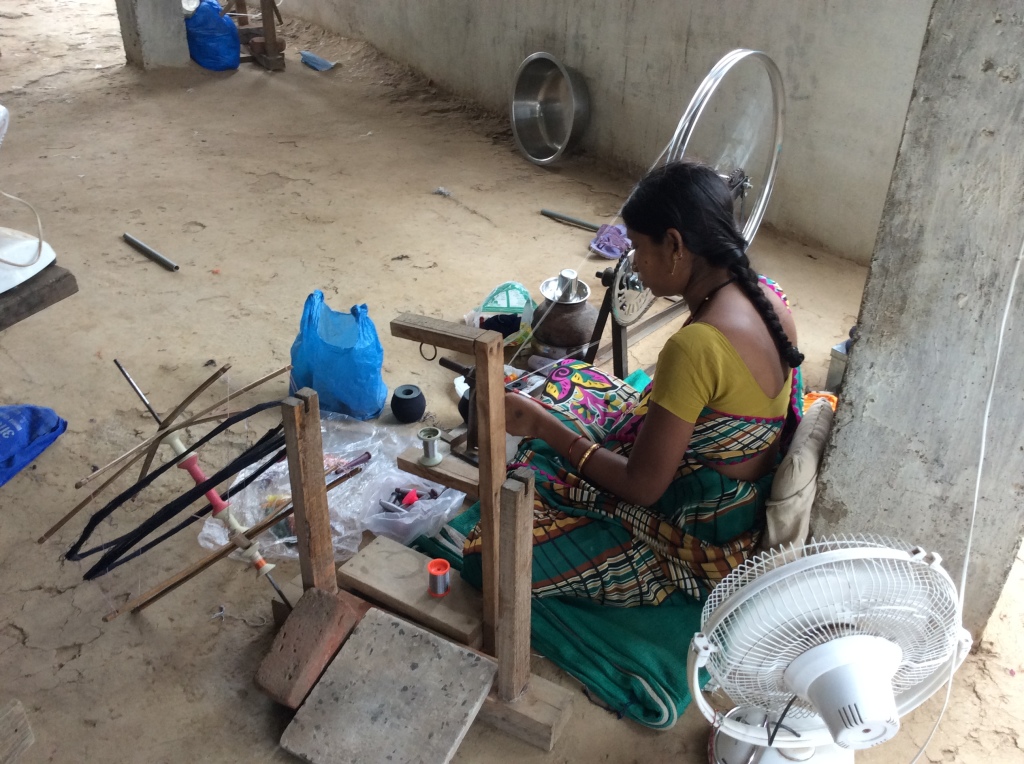
Sally left Rehwa to found Women Weave in 2002. As well as their workshop in Maheshwar, WW employ women in nearby villages. They have a small workshop of about 15 looms in nearby Itwadi, which I was taken to visit on my second day. Here as well as in the town workshop, there was an array of blue and white. A large order for an American company was being produced. There was a lively, conscientious atmosphere in the workshops. The weavers were engrossed in the rhythm of passing the shuttle back and forth and operating the peddles and every so often neatening a lose thread here or there. There was a bit more chatter and even some singing amongst the women working on bobin winding and warping.
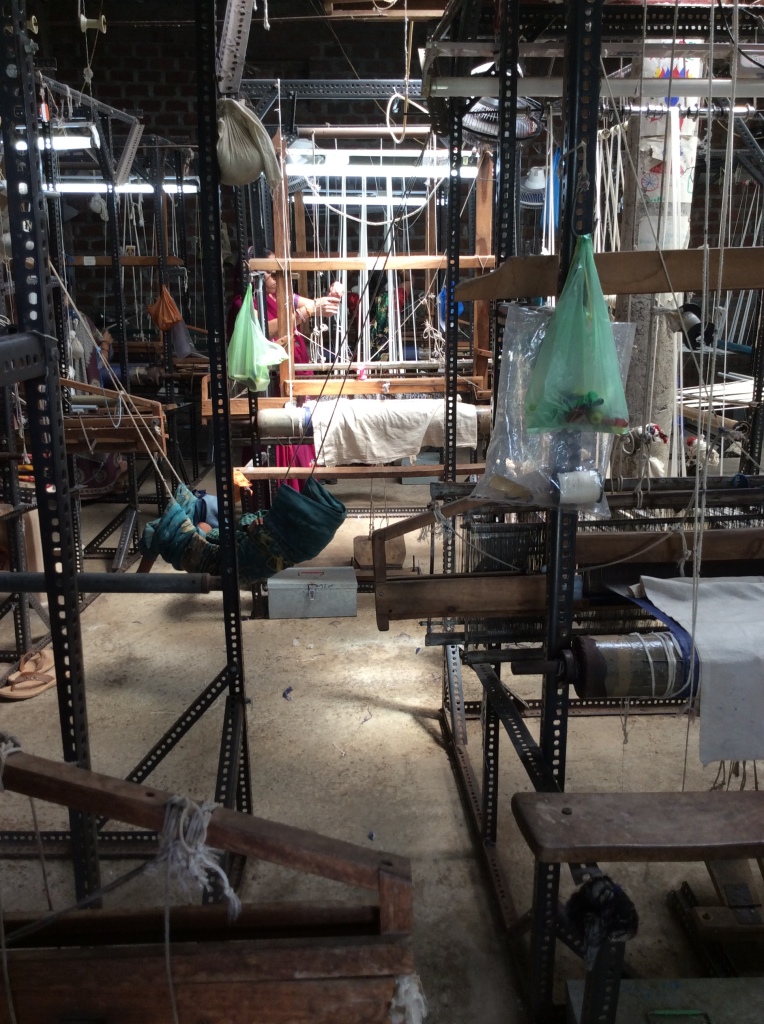
Women Weave have also trained women in Dindori and Chanderi in Madhya Pradesh as well as via other organisations, weavers in Kota ad Bikaner in Rajasthan. They are currently in the preparatory stage of a handloom school to teach design, business, IT and English language as well as technical weaving skills. This will welcome weavers all over India. I was particularly interested in the plan for a Handloom school as I’ve seen the successful outcome of the artisan-designers graduating from Kala Raksha Vidhyalaya. I will be following the school’s progress and visiting again to find out more.
They also have various ongoing programmes. One is the Gudi Mudi khadi project – easier for the locals to pronounce than Women Weave! – which connects farmers in Central India with formerly unemployed local women of Maheshwar to create khadi (hand-spun and hand-woven) textiles for fashion and homeware accessories. Another is Khatkata project, named after the sound of the weft shuttle hitting the loom. It works to revive and sustain weaving in areas that have a long history of weaving, but are more isolated than Maheshwar, such as Dindori which has less access to new high end markets. They also run programmes that provide heath care and childcare.
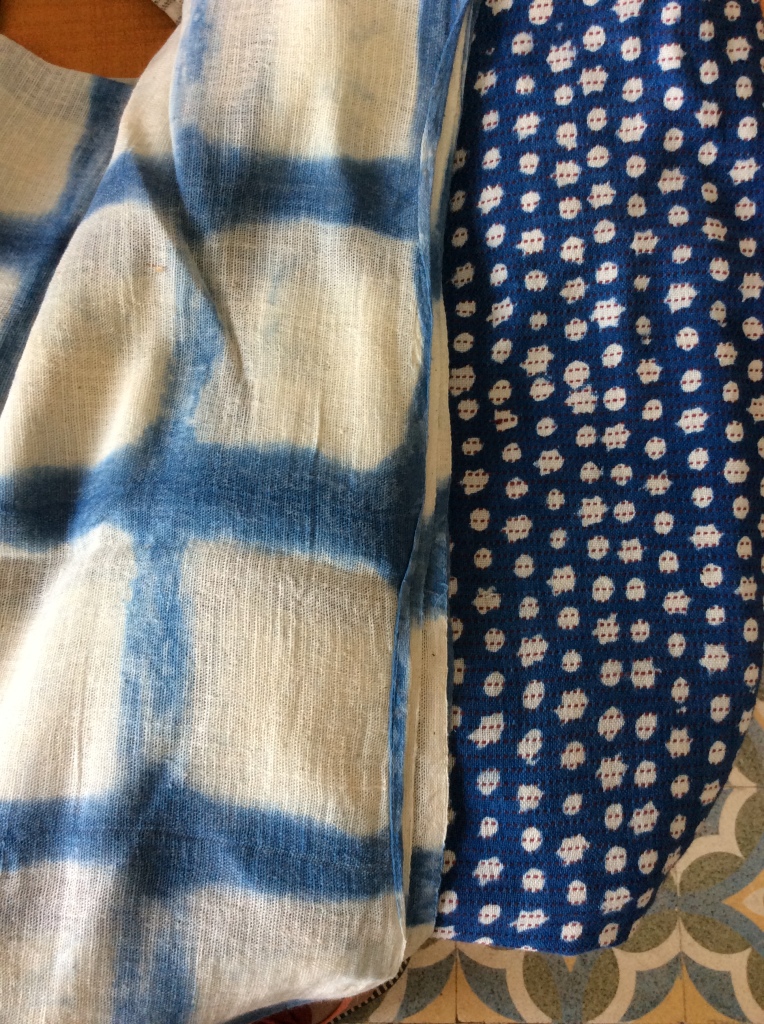
In between visiting weaving workshops, I wandered through the fort area and its many temples. Every so often you’d get a view of the beautiful Namada river, through a window of the fort or a break in the trees. As you walk down to the banks there is a wide stone jetty where boats park up, and worshippers immerse themselves into the sacred river. It was coming to the end of the monsoon when I was there. There was one evening of very heavy rain. As it calmed down, shafts of dimming sunlight shot through the clouds to create a serene, dreamy atmosphere.
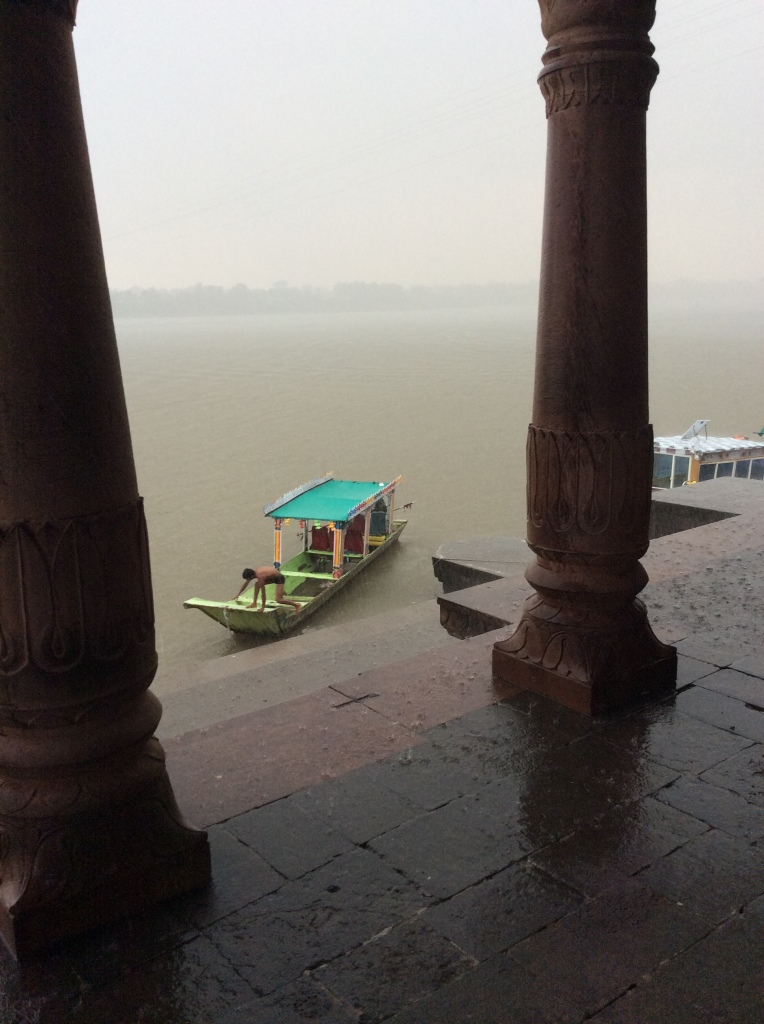
The rich history, natural and architectural beauty along with the vibrant weaving industry makes Maheshwar an inspiring and magical town. While I partly felt I was transported back into history, as it may have been during Ahilyabhai’s reign, there was also a buzz of innovation and moving forward. Through the combination of the weaving workshops selling their products through local showrooms and the two ethical and empowering organisations Women Weave and Rehwa, vast and varied markets can be reached. The humble, traditional sari is still, and will continue to be lovingly and stylishly worn among both Indians at home and all over the world. And how better to show off this beautiful and highly skilled handloom weaving than through this national wrapped and draped un-stitched garment. The versatility of the weaving and the innovative new explorations with fibre and colour mean that Maheshwar weaving can reach markets all over the world, while helping to keep a tradition alive and weavers in sustainable employment.
